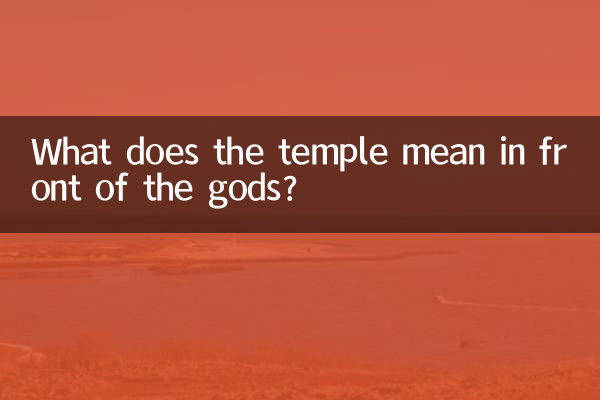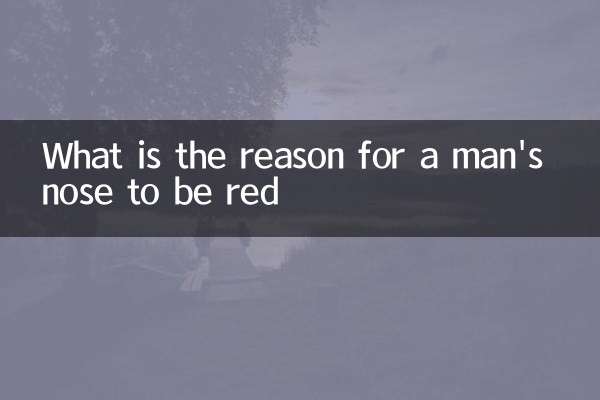Title: What does the temple mean in front of the gods?
In Chinese culture, the phrase "before the gods and behind the temple" is often mentioned, but its specific meaning and cultural connotation behind it are little known. This article will combine popular topics and hot contents on the Internet for the past 10 days to deeply explore the significance of "before the gods and behind the temples" and present relevant background information through structured data.
1. The literal and deep meaning of "before the gods and behind the temples"

"Before the God and the Temple" literally refers to the front of the statue of the god and the rear area of the temple. But in traditional culture, it is more used to describe a special spatial relationship or Feng Shui pattern:
| concept | explain |
|---|---|
| Literal meaning | Refers to the area in front of the statues in the temple and the space behind the temple |
| Feng Shui Meaning | In Feng Shui, it refers to specific architectural layout and spatial relationships |
| Cultural symbols | Represents the dividing between sacred and secular, with the first public sacrificial area and the second mysterious forbidden area |
2. The topics related to "Before the God and the Temple" that are hotly discussed on the Internet
In the past 10 days, the discussion on "Before the Gods and the Temples" has mainly focused on the following hot areas:
| Topic Category | Specific content | Popularity index |
|---|---|---|
| Building Feng Shui | How to draw on the layout concept of "before the gods and behind the temples" in modern architecture | ★★★★ |
| Cultural interpretation | Comparison of spatial differences between "before and behind the temple" in temples in different places | ★★★☆ |
| Film and television works | Analysis of the "Before and Behind the Temple" scenes in recent popular dramas | ★★★★☆ |
| Travel hot spots | The representative "In front of the gods and temples" building becomes a check-in place | ★★★ |
3. The specific manifestation of "Before and Behind the Temple" in different cultural fields
1.Field of Architecture
In traditional Chinese architecture, the layout of "before the gods and behind the temples" reflects a strict hierarchical order. The front of the statue is usually set up as an open square or courtyard for sacrificial activities; while the rear of the temple is mostly private space, sacred objects such as magical instruments are stored.
2.Application of Feng Shui
Feng Shui masters believe that the layout of "before and behind the temple" contains the three talents of heaven, earth and man:
| position | Five Elements Attributes | Functional significance |
|---|---|---|
| Before God | Yang, belongs to fire | Accept yang energy and gather popularity |
| Behind the temple | Yin, belongs to water | Save the wind and absorb the air, guard the rear |
3.The embodiment of folk culture
In traditional customs in many places, "before the gods and the temples and the temples" are regarded as the dividing line between sacred and secular. For example:
4. A new interpretation of the concept of "before and behind the temple" in modern society
With the development of society, the traditional concept of "before the gods and behind the temples" has also been given new connotations:
1.Application in urban planning
Some newly built cultural squares draw on the spatial concept of "before the gods and behind the temples", with an open activity area set up in the front and a cultural display area retained in the back.
2.Metaphor in business management
Some management scholars compare "before the god" to a window for enterprises to display externally, while "behind the temple" symbolizes the internal operation system and emphasizes the balanced relationship between the two.
3.Inspiration for personal growth
The field of psychology believes that "before the god" represents an individual's external expression, and "behind the temple" symbolizes the inner world. A healthy psychology requires the harmony and unity of the two.
5. Related disputes and hot topics of discussion
Recent controversies about "before the gods and behind the temples" are mainly concentrated on:
| Controversy point | Support opinions | Oppose viewpoint |
|---|---|---|
| Commercial Development | Rational use can promote cultural dissemination | Overcommercialization can destroy cultural truth |
| Space transformation | Adapting to modern needs is an inevitable trend | The traditional pattern should be maintained |
| Cultural interpretation | Need to innovate and develop interpretation methods | The records of ancient books should be strictly followed |
Conclusion
"Before the God and the Temple" is an important concept in Chinese traditional culture. It not only reflects the ancients' profound understanding of spatial order, but also contains rich philosophical thoughts. In contemporary society, we must respect its traditional connotation and view its modern evolution with an open attitude. By exploring this topic in depth, we can not only enhance our understanding of traditional culture, but also provide useful inspiration for modern life.

check the details

check the details